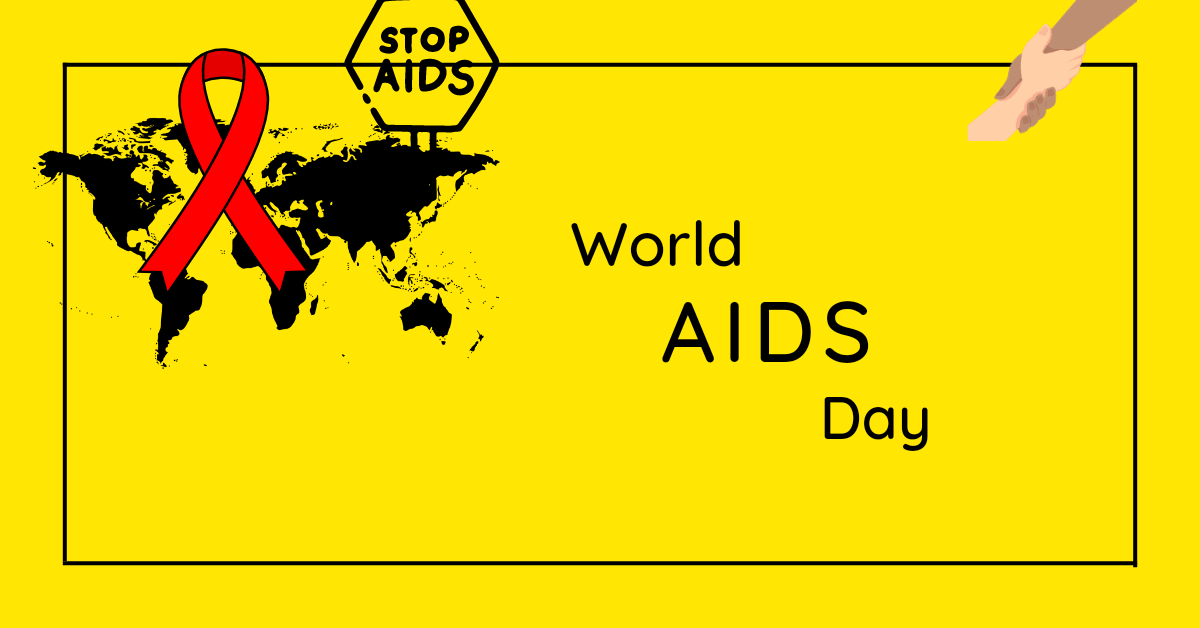AIDS, the acquired immuno-deficiency syndrome (sometimes called “slim disease”) is a fatal illness caused by a retrovirus known as the human immuno-deficiency virus (HIV) which breaks down the body’s immune system, leaving the victim vulnerable to a host of life-threatening opportunistic infections, neurological disorders, or unusual malignancies. Among the special features of HIV infection are that once infected, it is probable that a person will be infected for life. There is no HIV cure. Strictly speaking, the term AIDS refers only to the last stage of the HIV infection. AIDS can be called our modern pandemic, affecting both industrialized and developing countries.
The World AIDS Day 2022 theme is “Equalize”.
We wear Red Ribbon to show support to HIV patients .
WHY IS AIDS A BURNING ISSUE?
- In 2019, there were 38.0 million (31.6 million-44.5 million) people living with HIV.
- 2 million (30.2 million-42.5 million) adults.
- 8 million (1.3 million-2.2 million) children (0-14 years).
- 81% (68-95%) of all people living with HIV knew their HIV status.
- About 7.1 million people did not know that they were living with HIV.
- 7 million (55.9 million-100 million) people have become infected with HIV since the start of the epidemic.
HOW HIV SPREADS?
Sexual transmission – AIDS is first and foremost a sexually transmitted disease. Any vaginal, anal or oral sex can spread AIDS. Every single act of unprotected intercourse with an HIV-infected person exposes the uninfected partner to the risk of infection.
Blood contact – AIDS is also transmitted by contaminated blood transfusion.
Among drug users who inject heroin, cocaine or other drugs, this route of transmission is significant because exposure is repeated so often, in some cases, several times a day. As a result, needle-sharing by drug users is a major cause of AIDS in many countries, both developed and developing, and in some it is the predominant cause. Any skin piercing (including injections, ear-piercing, tattooing, acupuncture or scarification) can transmit the virus, if the instruments used have not been sterilized and have previously been used on an infected person. It may be mentioned that transfusion of blood and blood products has played a minor role in the spread of AIDS in the developed countries.
Mother to child transmission – HIV may pass from an infected mother to her fetus
Through the placenta or to her infant during delivery or by breast feeding.
WHAT ARE THE SIGNS OF HIV?
- weight loss ≥ 10% of body weight
- chronic diarrhea for more than 1 month prolonged fever for more than 1 month (intermittent or constant).
- persistent cough for more than 1 month
- Recurrent common infection like ear infection, pharyngitis
HOW CAN I PREVENT IT ?
- Education – until a vaccine or cure for AIDS is found , the only mean available is health education to enable people to make life saving choices ( avoiding multiple partner, using condoms)
- One should avoid the use of shared razors and toothbrushes.
- Women suffering from AIDS or who are at high risk of infection should avoid becoming pregnant.
- Prevention of blood borne HIV transmission – people in high risk groups should be urged to refrain from donating blood, body organs , sperm and other tissues
The Sustainable Development Goal target is to end the AIDS epidemic by 2030. UNAIDS has led the development of a global strategy, “Fast Track: Ending the AIDS Epidemic by 2030“
- A focus on population left behind by the HIV response, such as adolescent girls, key population (sex workers, men who have sex with men, people who inject drugs and transgender people), migrants and children;
- A focus on locations where the greatest HIV transmission is occurring and with the greatest HIV burden, and the use of data to support the impact of programmes;
- An integrated HIV response that expands the contribution towards universal health care, including health workforce, procurement systems, injection and blood safety, and treatment of coinfections; and
- Sustainable programmes with transitioning to domestic funding of essential HIV services.


